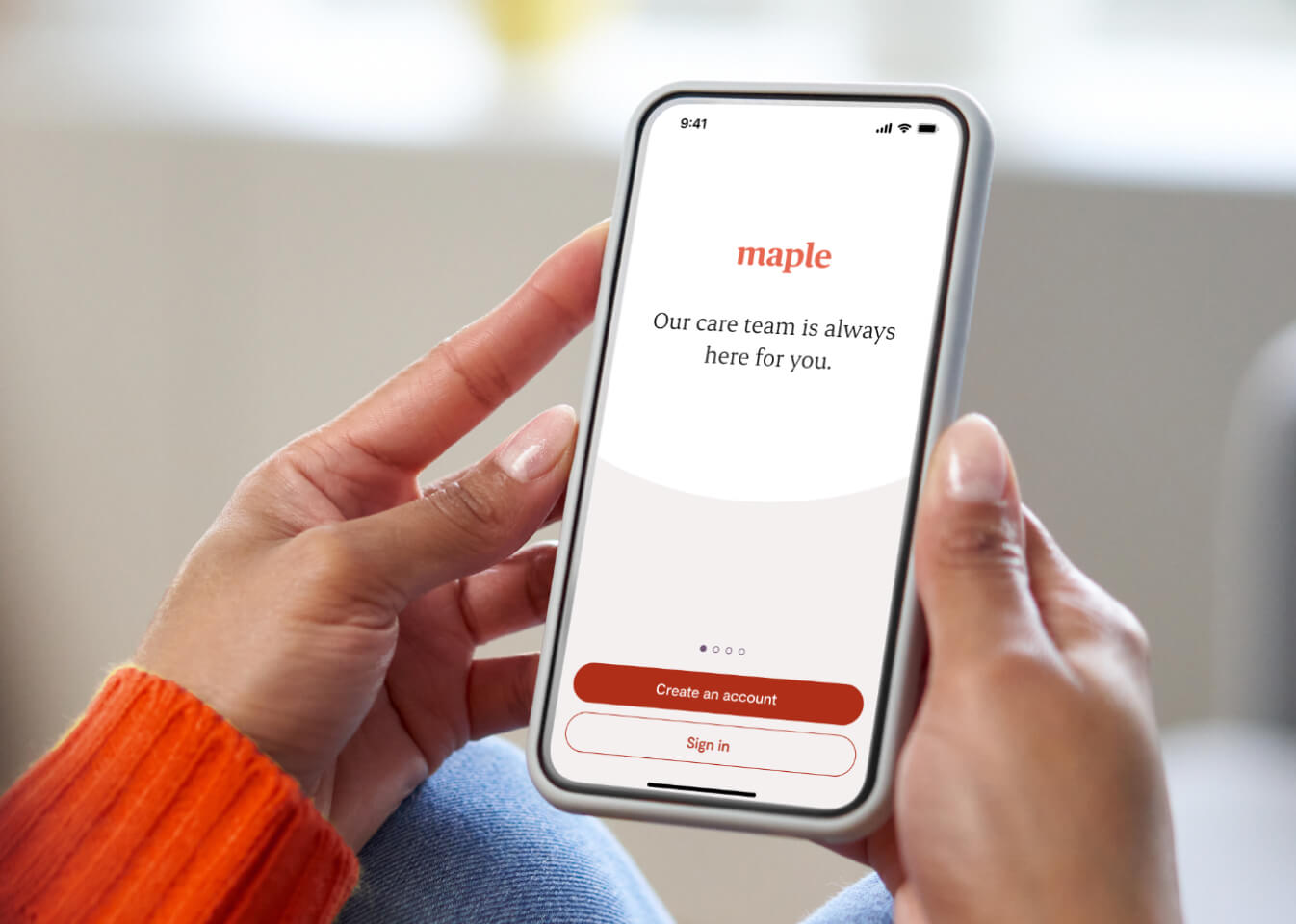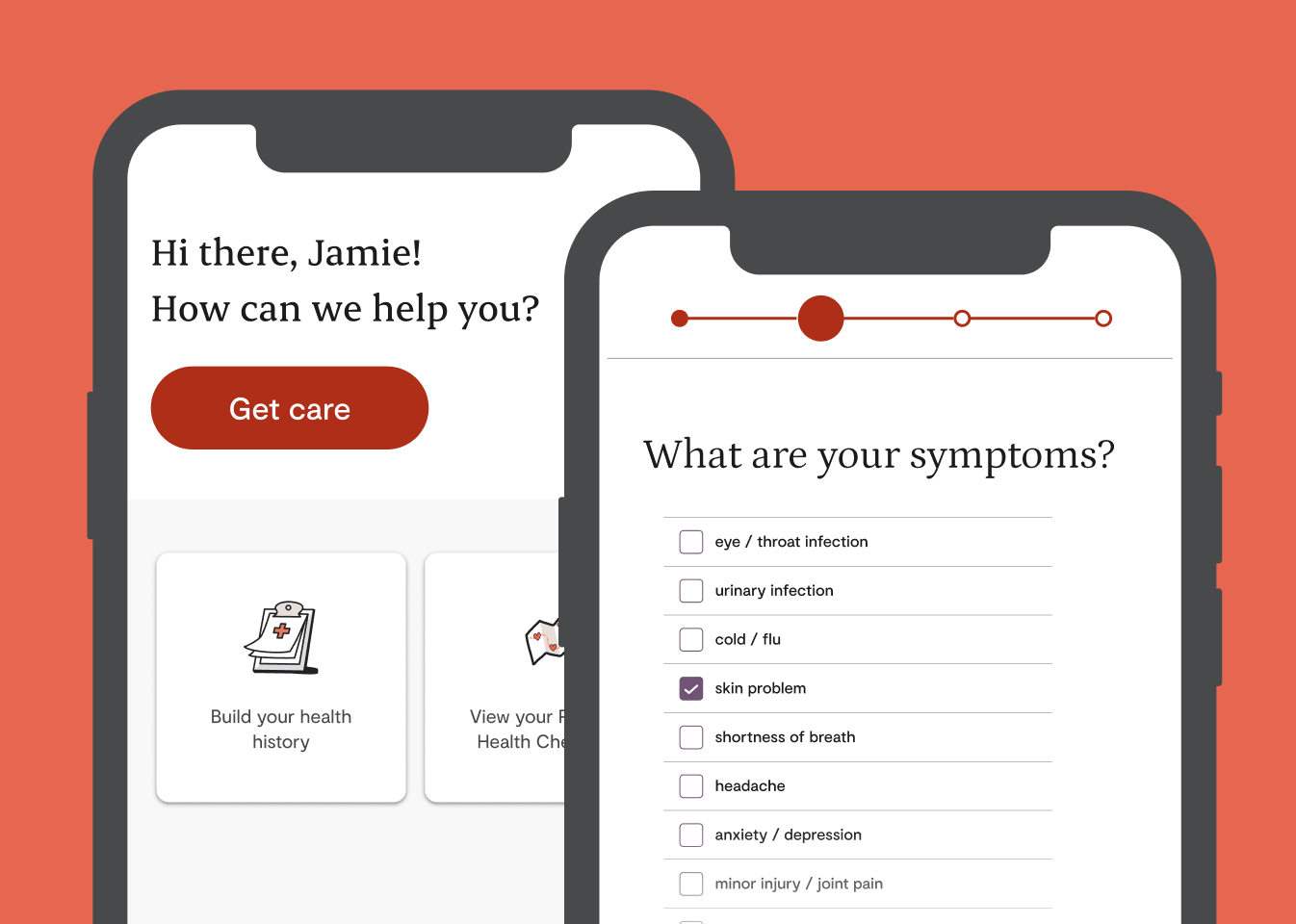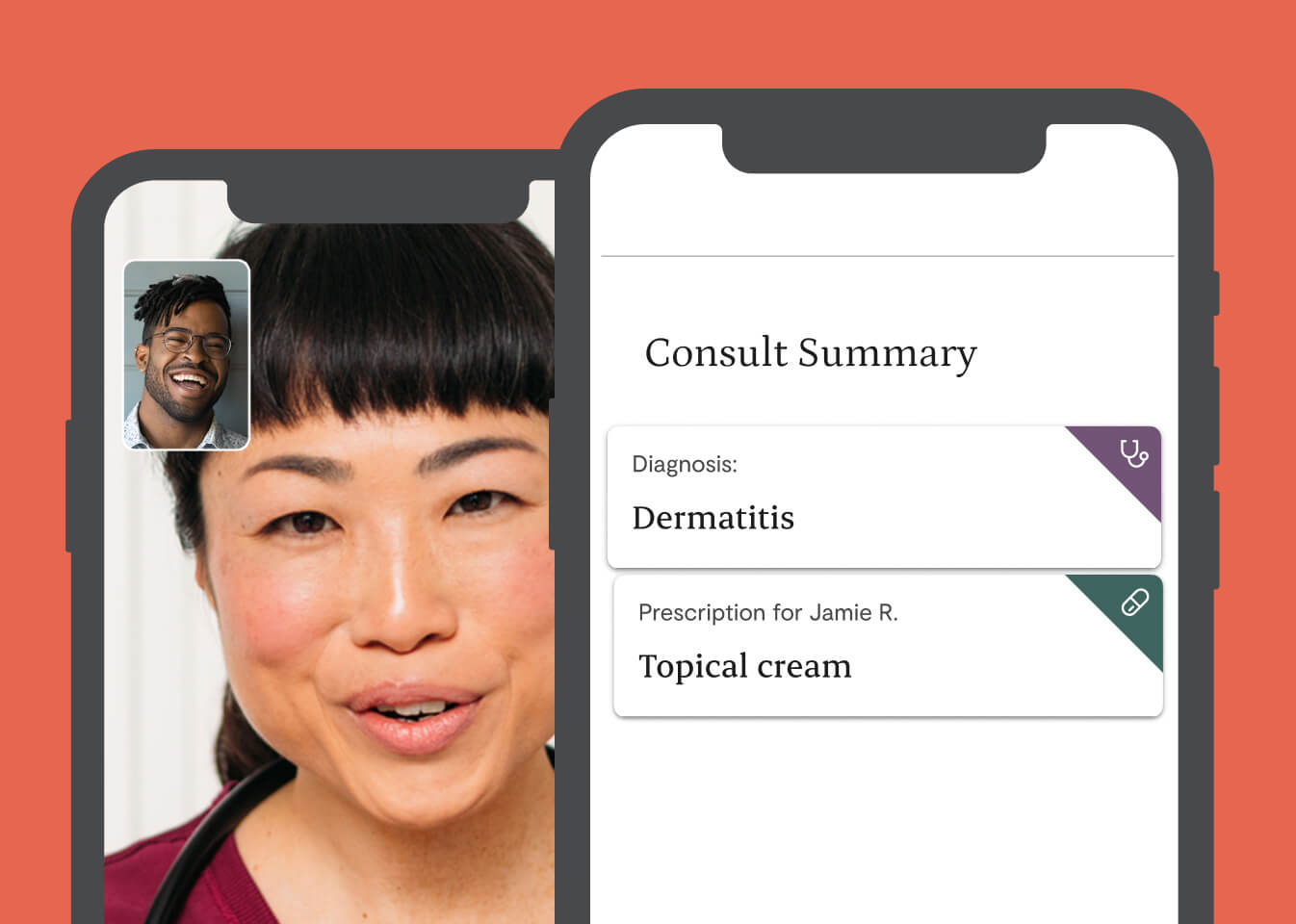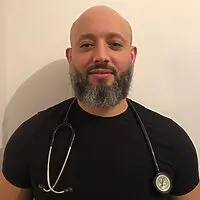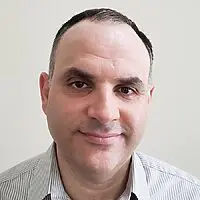PTSD treatment, diagnosis & prescriptions
Skip the waiting room! Instantly connect with Canadian doctors for medical care from your phone, tablet or computer - any time, 24/7.

- Prescriptions available at a provider's discretion
- Speak to a doctor or nurse practitioner
- 24/7 availability
- Get connected in minutes
Trusted by millions of Canadians
- 4.8 rating30K+ App Store reviews
- 4.6 score5K+ Trustpilot reviews
Talk to a doctor about PTSD treatment online
See a doctor or nurse practitioner today to get a new prescription or refill, at their discretion.
See a provider in three easy steps.
- 1
Register and become a member

- 2
Select the “Get care” button on our homepage

- 3
Connect with a Canadian-licensed doctor or nurse practitioner in minutes

Why Canadians love Maple
A fantastic way to get medical advice when you are unable to see someone in person. The app is so simple to use. Highly recommend. I am not a tech savvy person but the doctor was kind enough to patiently walk me through every step of the process. Thank you.
Saved me hours waiting in the ER.
Fast and effective tool for getting a diagnosis and prescription.
The doctor willingly took the time to explain things to me.
Very easy to book a therapist and get appointment receipts.
Frequently asked questions
Maple 101
Maple is a virtual care platform that connects you with doctors and other healthcare providers via text, audio, or video. After you log in to your Maple account, you can request an online consultation.
Consultations work similarly to in-person appointments — the doctor can complete an assessment by asking questions about your symptoms, going through your health history, and determining what treatment is right for you. If they think your condition is more serious, they may tell you to go to a clinic for an in-person examination.
As a Maple member, you get 24/7 access to virtual primary care online and more. You can connect with our network of providers via text, audio, or video call within minutes.
Pricing and Payment
Our membership costs $79.99/month and covers virtual care for patients and their families, including the primary account holder's spouse and any dependents.
For patients in eligible provinces, our membership includes:
- Access to daily primary care provider visits: One daily visit with a primary care provider for each family member in their household.
- Paediatric care: Covered paediatric primary care visits, available by appointment.
- Second medical opinions: access to a network of experts for a second opinion if diagnosed with a complex condition (e.g. cancer).
- Personal Health Check-Ins: A series of personalized, evidence-based proactive care screenings to maintain and improve health.
- iCBT courses: Access to iCBT (internet-based cognitive behavioural therapy) self-assessment and courses.
- Access to specialists in eligible provinces: Easy access to specialists on Maple within days, not months. No referral is needed.
- Specialist referrals in eligible provinces: Ability to be referred to a physician specialist for in-person care, if needed.
- Credit discounts: An $80 credit per month to be applied to a Maple specialist visit.
Please note that our membership cannot be combined with other offerings, such as private insurance coverage and provincial programs, where available. In some cases, membership fees can be covered by a Healthcare Spending Account (HSA) — check with your HSA provider for more details.
We accept all major credit cards, including AMEX cards, as well as Google and Apple Pay.
Security and Privacy
At Maple, we proudly prioritize privacy as a cornerstone of our virtual care services. We strictly adhere to privacy and healthcare legislation in Canada, such as PIPEDA and PHIPA regulations, to ensure patients' personal and health information remains completely private and safeguarded.
Our policies and consent processes are designed to be simple and easily understood, empowering individuals with control and a clear understanding of their healthcare journey. When using our services, a patient’s session is protected by a comprehensive security infrastructure and stringent data policies.
Patients also retain full control of their personal health information, medical records and test results at all times. Our approach is reinforced by consultations with leading experts, guaranteeing comprehensive policy frameworks that are reviewed at a regular cadence.
All providers delivering healthcare through Maple are licensed in Canada and governed by their licensing regulatory colleges, and in all instances, must act in accordance with the governing principles set out in the telemedicine policies of each medical regulator in the applicable province.
Regulators across Canada support and recognize the value of services like ours, and the way in which they can benefit patients, physicians, and Canada’s broader healthcare system by improving access to care and increasing efficiencies in the delivery of care.
About PTSD
Yes, you will be able to talk to a doctor on Maple about post-traumatic stress disorder.
If you’re experiencing post-traumatic stress disorder symptoms, the doctor will suggest that you get a PTSD assessment at a clinic to confirm whether you’re experiencing this condition.
Yes. Our physicians can renew post-traumatic stress disorder medications online during your consultation. Once you accept a prescription, you’ll have the option to pick it up from any pharmacy or have it delivered to your door at no additional cost.
You can visit our How it works page to learn more.
Post-traumatic stress disorder (also called PTSD) is a mental illness caused by either experiencing or witnessing a traumatic event.
If they don’t seek help, patients experiencing PTSD may have difficulty coping with normal day-to-day life after the event, and this could cause several negative long-term effects from PTSD.
These long-term effects can arise in many ways, including feelings of depression and anger related to PTSD. These can result in visible symptoms like uncontrollable outbursts, or invisible symptoms like recurrent memories, PTSD flashbacks, or nightmares.
Post-traumatic stress disorder symptoms could begin as quickly as a few weeks after the traumatic incident, or they may take years to appear.
Several different types of symptoms could appear depending on the severity of the traumatic event as well as each person’s individual ability to cope with the memories of these events.
Some patients experience intrusive memories as a result of their condition, resulting in PTSD nightmares, PTSD flashbacks (reliving the memory), recurrent stressful memories, or severe emotional distress brought on by triggers that bring back traumatic memories.
Others experience symptoms of avoidance, such as avoiding people, locations, or other triggers that could cause a PTSD episode.
The most common post-traumatic stress disorder causes relate to stressful experiences during which the patient experienced or witnessed a traumatic event.
In many cases, these events had the potential to be life-threatening for the patient or someone else, or did cause loss of life for someone else, which was witnessed by the person with PTSD.
These causes can also relate to individual inherited personality features such as mental health risks and personal temperament, which can affect one’s ability to cope with stressful situations.
The biggest difference between PTSD and anxiety is that anxiety is a very common symptom experienced by those with post-traumatic stress disorder.
However, patients with anxiety or GAD (general anxiety disorder) don’t necessarily have PTSD.
Therefore, while anxiety frequently affects people with PTSD, patients with anxiety not caused by traumatic events don’t necessarily have PTSD.
C-PTSD (complex post-traumatic stress disorder) and PTSD are very similar in both symptoms and treatment methods.
The biggest difference between PTSD and C-PTSD is that PTSD is typically caused by a single traumatic event, while C-PTSD is associated with exposure to multiple traumatic events.
When you meet with a doctor on Maple, they will want to talk to you about your medical history for both physical and mental health, your family’s medical history, and any symptoms you’re experiencing.
If they believe you could be experiencing PTSD, the doctor will suggest that you have an assessment done at a clinic to confirm the condition before offering a diagnosis.
Most commonly, these additional tests include:
- A psychological examination
- A full physical exam
The most frequently used post-traumatic stress disorder treatments involve psychotherapy and, in some cases, PTSD medications.
Several forms of psychotherapy may be suggested, depending on what type of trauma you experienced as well as the severity of your symptoms.
The most common forms of psychotherapy used in post-traumatic stress disorder treatments include:
- Cognitive therapy (particularly for treating depression and PTSD)
- Exposure therapy (especially for combating PTSD nightmares or flashbacks)
- Eye movement desensitization and reprocessing (EMDR) therapy
Do you need medical care today?
Trusted, experienced doctors and nurse practitioners are ready to see you.
Maple is safe and effective for common non-emergency issues. If you believe you are experiencing an emergency, please call 911 or proceed to your nearest emergency room.
